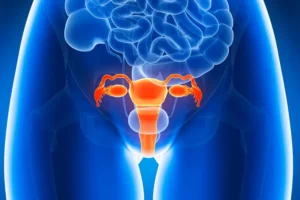What Is a Hysterectomy? Types, Procedures, and Terminology Explained

Introduction
What Is a Hysterectomy: A hysterectomy is a surgical procedure involving the removal of the uterus, and in some cases, additional reproductive organs. It is performed for various medical reasons, including the treatment of gynecologic cancers, chronic pelvic pain, and uncontrollable heavy bleeding.
Types of Hysterectomy
- Total hysterectomy: They take out the whole uterus and the cervix. This one’s the “classic” move.
- Partial (Supracervical) hysterectomy: They leave the cervix, just grab the top part of the uterus. It’s like a “lite” version.
- Radical hysterectomy: This is the “scorched earth” option uterus, cervix, part of the vagina, and surrounding tissue, usually because of cancer.
- With Bilateral Salpingo Oophorectomy: Translation: uterus, both tubes, and both ovaries are gone. Whole kit and caboodle.
Why It’s Performed
Noncancerous conditions: fibroids, heavy or prolonged bleeding, adenomyosis, uterine prolapse, endometriosis, and chronic pelvic pain
Cancer or precancer: cancers of the uterus, cervix, ovaries, or fallopian tubes or precancerous changes
There’s a few different routes:
- Abdominal hysterectomy: Old-school big cut in the belly.
- Vaginal hysterectomy: No outside scars they go up through the vagina. Honestly, kind of genius.
- Laparoscopic hysterectomy: Tiny cuts, camera, some fancy tools. Less downtime, usually.
- Robotic-assisted laparoscopic: Like the last one, but with a robot. Feels very sci-fi, but it’s real.

Surgical Approaches
- Uterine fibroids (those annoying little tumors)
- Endometriosis (painful tissue growing where it shouldn’t)
- Uterine prolapse (when your uterus basically tries to bail out)
- Cancers down there
- Pelvic pain that never gives you a break
- Bleeding that just doesn’t quit
Medical Terminology Explained
Hysterectomy: Removal of the uterus.
Total (Simple) Hysterectomy: Uterus + cervix removed
Subtotal (Supracervical/Partial) Hysterectomy: Uterus removed, cervix retained
Bilateral Salpingo‑Oophorectomy (BSO): Removal of both ovaries and fallopian tubes
Radical Hysterectomy: Extensive removal of reproductive organs plus supporting tissue, used for cancer
Surgical Menopause: The abrupt onset of menopause caused by ovary removal during hysterectomy
Alternatives to Hysterectomy
Before surgery, alternatives may include:
Hormonal IUDs : Highly effective for heavy bleeding
Myomectomy: Removes fibroids while preserving the uterus, either open or minimally invasive
Uterine Artery Embolization (UAE): Shrinks fibroids via blocked blood supply shorter recovery but minor complication risks
Endometrial ablation: Destroys the uterine lining to control bleeding; not suitable for all cases
Recovery and Considerations
Hospital Stay: Ranges from same-day discharge to several days, depending on the procedure.
Physical Recovery: Generally spans 4–6 weeks, during which patients are advised to avoid heavy lifting and strenuous activities.
Conclusion
A hysterectomy is a significant surgical procedure with various types and approaches tailored to individual medical needs. Understanding the differences and implications of each can help patients make informed decisions in consultation with their healthcare providers. The importance of knowing "What Is a Hysterectomy" is very important for us.
.jpg)
.jpg)
.jpg)
Comments
Post a Comment